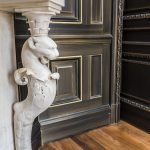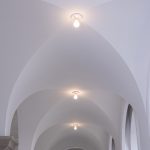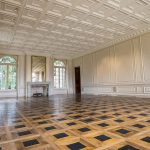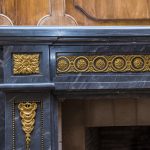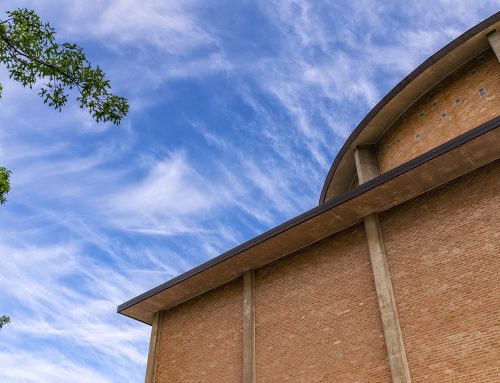An Italian count built the mansion in the ’30s. Tom Hicks expanded it at the turn of the century. In 2017, the Statler’s developer snapped it up for a song and is turning it into Preston Hollow’s newest exclusive ‘subdivision’ with its centerpiece as The Crespi Estate.
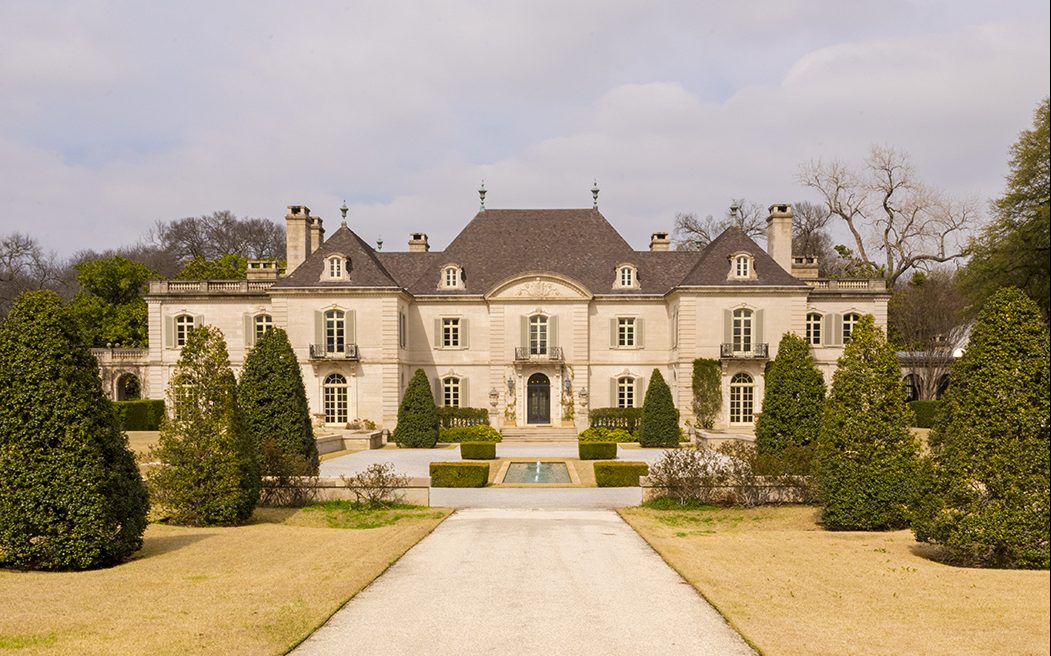
Photos by Danny Fulgencio.
Thirty days. That’s how long the crew has to give this Preston Hollow cougar a touchup before she goes back on the market to lure her next suitor.
Silver has been ordered to patch the silver-leaf bar. Workers hang two 75-inch televisions in the pool house. Gardeners are restoring the rose, vegetable and herb gardens to their former glory. And a chandelier from the Statler is on its way in a custom-made crate to grace the mansion’s entry.
The Crespi Estate, on Walnut Hill near the Tollway, has a 28,000-square-foot limestone mansion designed in 1938 by world-renowned architect Maurice Fatio. The home, commissioned by Italian Count Pio Crespi who had been sent to Texas to oversee his family’s cotton empire, has a storied past to match its architectural significance.
Mehrdad Moayedi, the CEO of Centurion American, which recently completed the $250 million renovation of the mid-century modern Statler Hotel in Downtown Dallas, bought the 25-acre property for $36.2 million in a December 2017 auction. Previous

owner billionaire banker Andy Beal purchased the property for $100 million in 2016.
Moayedi plans to divide the land into a new seven-home neighborhood called The Crespi Estates, according to Brad Oellermann, who oversees the project’s construction. The mansion, guest house and pool house on 12 acres will sell for $29.5 million. A line of magnolias will be planted in front of the mansion to separate that property from the new Crespi Estates, five homes to be developed and sold off Walnut Hill and two off Daria Place near the home of former President and Mrs. George W. Bush. The mansion’s new entrance will snake down from Walnut Hill.
“When you think of Dallas stereotypes, there’s football, big hair and large living in large houses, and there’s none larger than the Crespi,” says Mark Lamster, architecture critic at The Dallas Morning News. “This is the definition of what a Dallas mansion could be: an exercise in the kind of ostentation that makes Dallas, Dallas.”
‘French chateau twist’
Italian-born cotton tycoon Crespi fell in love with Florence “Flo” Patton in Waco during the 1920s, even though both were married to other people and had children, according to Alan Peppard, former society columnist at The Dallas Morning News. Flo’s husband, Willard Wigley, sued Count Crespi, citing “alienation of affections.” The jury awarded Wigley $10,000.
After marrying Flo, Crespi relocated his business to Dallas and bought about 30 acres along the Cotton Belt rail line, which is now the Dallas North Tollway.
Swiss architect Fatio designed the mansion, called “Villa Florenza” by the Crespis. A rail depot was built on the property to transport marble and Indiana limestone to build the house. Fatio, who designed homes for the Vanderbilts and the Duchess of Marlborough, was known for his perfect proportions. The Crespi estate was the last home Fatio completed before his death at 45.
“Maurice Fatio is best known as a society architect to the fabulously wealthy in Palm Beach in the 1920s, building impeccably detailed and enormous houses that oozed ‘old world’ Mediterranean charm for those with new American money,” says Kathryn Holliday, director of the David Dillon Center for Texas Architecture at the University of Texas at Arlington. “The Crespi estate brings that kind of extravagant
taste to Dallas, but with a French chateau twist.”
The Crespis hosted guests such as the Duke and Duchess of Windsor and Coco Chanel and once held a reception for actor Jimmy Stewart and President Ronald Reagan during his presidential campaign. After Crespi’s death in 1969, Flo didn’t change the interior of the house even after she remarried. She died at the age of 100.
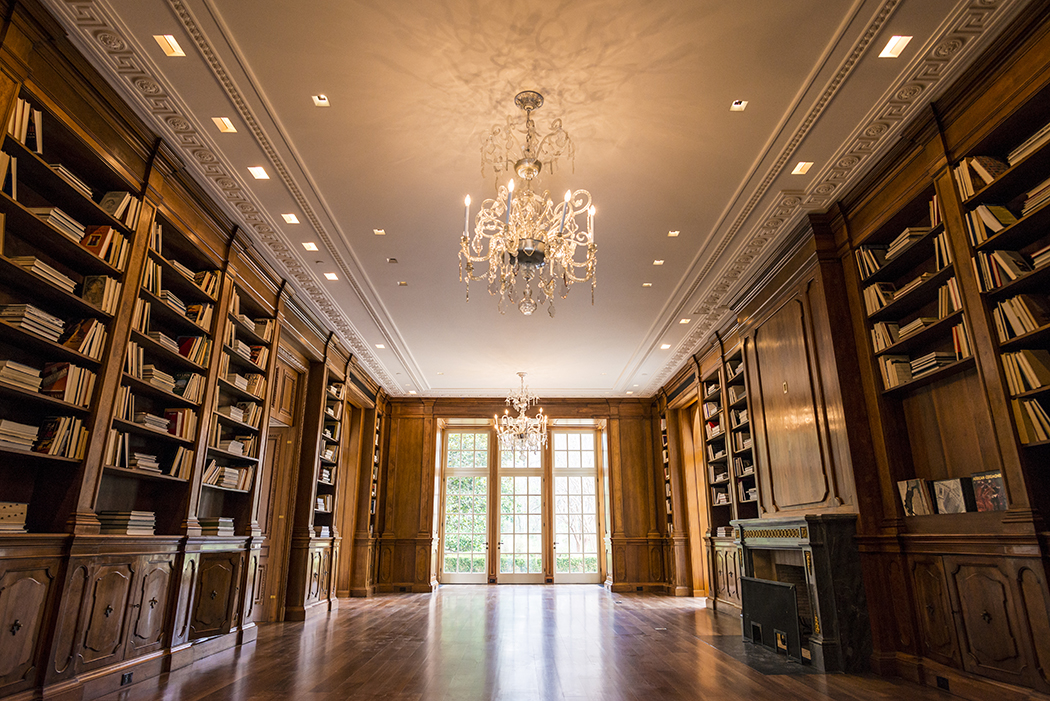
Photos by Danny Fulgencio.
The Hicks legacy
Former Texas Rangers and Dallas Stars owner Tom Hicks and his wife, Cinda, bought the mansion a few months after Flo died, and the property became known as the Crespi-Hicks Estate. The Hicks hired architect Peter Marino to restore it to the original vision.
As the home was remodeled from 2000 to 2002, Hicks arranged to open the Indiana quarry to make sure the exact vein of limestone was used. Each piece was then sent to Italy for crafting. The Hickses restored and expanded the mansion, which took as many as 250 craftsmen. Renovation cost was estimated at $2,000 per square foot. He also added a 3,300-square-foot, two-story guesthouse with a full kitchen, living room and dining room and a recreational complex with a pool and 4,800-square-foot hangout with a 19-seat cinema-quality theater.
Neighbor former president Bush is said to have hiked through the woods and come to hang out at the Hickses’, says Oellermann.
The Hickses lived in the mansion until 2014. Dallas billionaire banker Andy Beal bought the property in 2016 then sold it in 2017.
“One would have to go to 17th century Belgium or 18th century France to find comparable craftsmanship,” said the late Bill Booziotis, former Dallas Chapter AIA president, on Douglas Newby’s site Architecturally Significant Homes.
- Former Hicks estate. Dany Fulgencio
- dannyfulgencio.com 940.597.4177
- Crespi Estate



